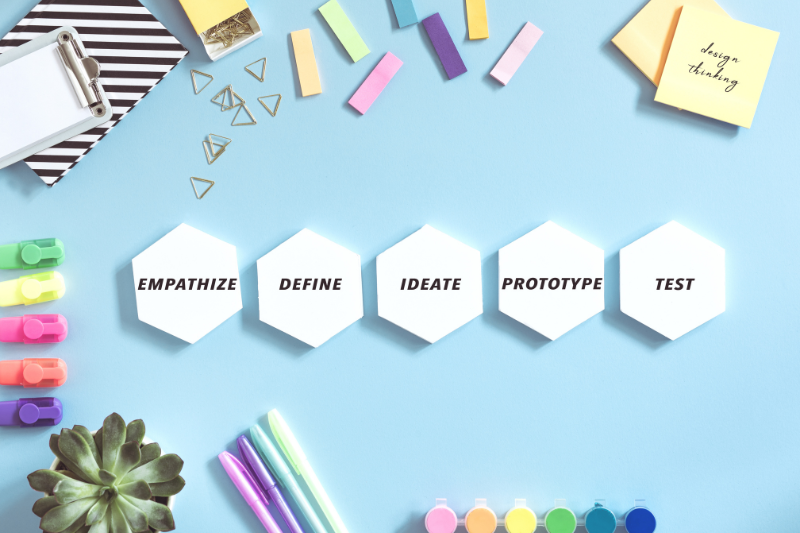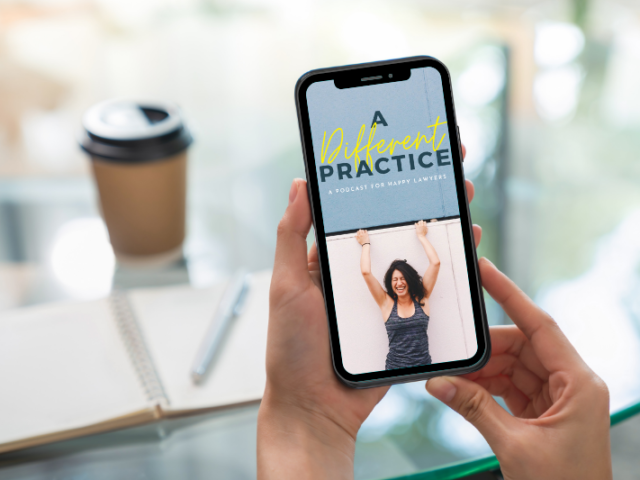I recently had the opportunity to co-lead a design thinking workshop at ABA Techshow titled “Designing an A+ Client Experience” and co-edited a book on the same topic. The reason the ABA has chosen to highlight this topic not once, but twice in the past month is because design thinking is a powerful process for improving client experience. In just five easy steps you can ensure that all legal and client services you offer add value and contribute to an A+ client experience.
What is design thinking?
According to the Interactive Design Foundation, “design thinking is a non-linear, iterative process that teams use to better understand their users, challenge assumptions, redefine problems and create innovative solutions to prototype and test”. Lawyers can use the design thinking process when designing new legal and client services for their target markets. The five steps are:
- Empathize: Research your Client’s Needs
- Define the Problem: A People-Centered Approach
- Ideate: How to Solve the Problem
- Prototype: Start to Create Solutions
- Test and Refine: Try your Solutions Out and Make Adjustments
A real-life example
So what does this look like in real life? Let me share a condensed version of the example we workshopped at TECHShow. My co-presenter and I created a fictitious law firm, A+ Legal, for demonstration purposes. A+ Legal helps clients navigate major life transitions in the areas of family, adoption, real estate, probate, and estate planning.
Step 1: Empathize: Research your Clients’ Needs
The goal in this step is to take off your lawyer hat, set your assumptions aside, and step into the shoes of your target clients. We want to understand them, their needs, and what their experience with our law firm is like. We used three tools to help us do this: a buyer persona, a customer journey map, and a client survey.
Step 2: Define the Problem: A People-Centered Approach
One of the questions we ask in our end-of-the-matter survey is “Is there anything we could have done to improve your experience with our firm”? Some feedback that we’ve received from a number of clients over the past year is that they’d like more options. To better understand this feedback, we schedule calls with five former clients who have shared that feedback. During our conversations, we use the five whys technique to get to the root of the problem. Through this process, we learn that clients want more options because they are on a budget and want to buy a legal service that is aligned with their legal needs and budget.
We use this information to draft a problem statement that is in the following format:
[Person/people who are the center of the problem in a descriptive way] . . . needs [use a verb] . . . [your compelling insight].Our initial problem statement is:
Our clients who are getting divorced want more legal service options because they are stressed about money and only want to pay for the legal services that they need.
This problem statement allows us to get super specific about the problem we are trying to solve for one of our target markets.
Step 3: Ideate: How to Solve the Problem
After we draft our problem statement, we start brainstorming potential solutions. Before we get started though, we first make sure that we’re set up in a space that inspires creative thinking and that we have all the necessary people in the room.
A few potential solutions our team generates are to offer an unbundled service or tiers of services, offer set fees so the client can budget in advance, and offer payment plans.
Step 4: Prototype: Start to Create Solutions
We decide that the solution we are going to try out first is to offer an unbundled service: a comprehensive consultation during which we offer legal advice, draft the initial documents, and provide a roadmap for the client to handle the rest of the case on their own. Before we put time and effort into drafting a new engagement agreement and taking any other steps needed in preparation for offering this new service, we’d like to test our assumption that this service will be valuable to our target clients. To answer this question, we draft a description of the service and outline all of the value the clients will receive. We then run this by the five clients we spoke with previously. If the feedback is positive, we can offer the service as an option to clients moving forward. If the feedback is negative, it’s back to the drawing board and time to choose a different solution to test out.
Step 5: Test and Refine: Try your Solutions Out
The final step is to identify metrics that will help us understand if our solution is working. We decide that an effective way to do this will be to track the percentage of clients who purchase this service and then subsequently share positive feedback in response to questions about the effectiveness and price in the end-of-the-matter client survey. If five percent of target clients purchase the service and offer positive feedback, we’ll continue to offer the service. If they do not purchase the service or if the feedback is negative, we will continue to talk with clients to better understand the problem and make adjustments as needed.
Tips for getting started
The best way to get started is to carve out time for designing thinking and to start small. Consider creating a standing monthly or quarterly meeting during which you review client feedback and problem-solve using design thinking principles. Each time, just pick one potential solution to the workshop.
Interested in connecting with other like-minded folks to talk more about design thinking? Join our Positive Connection Network.





